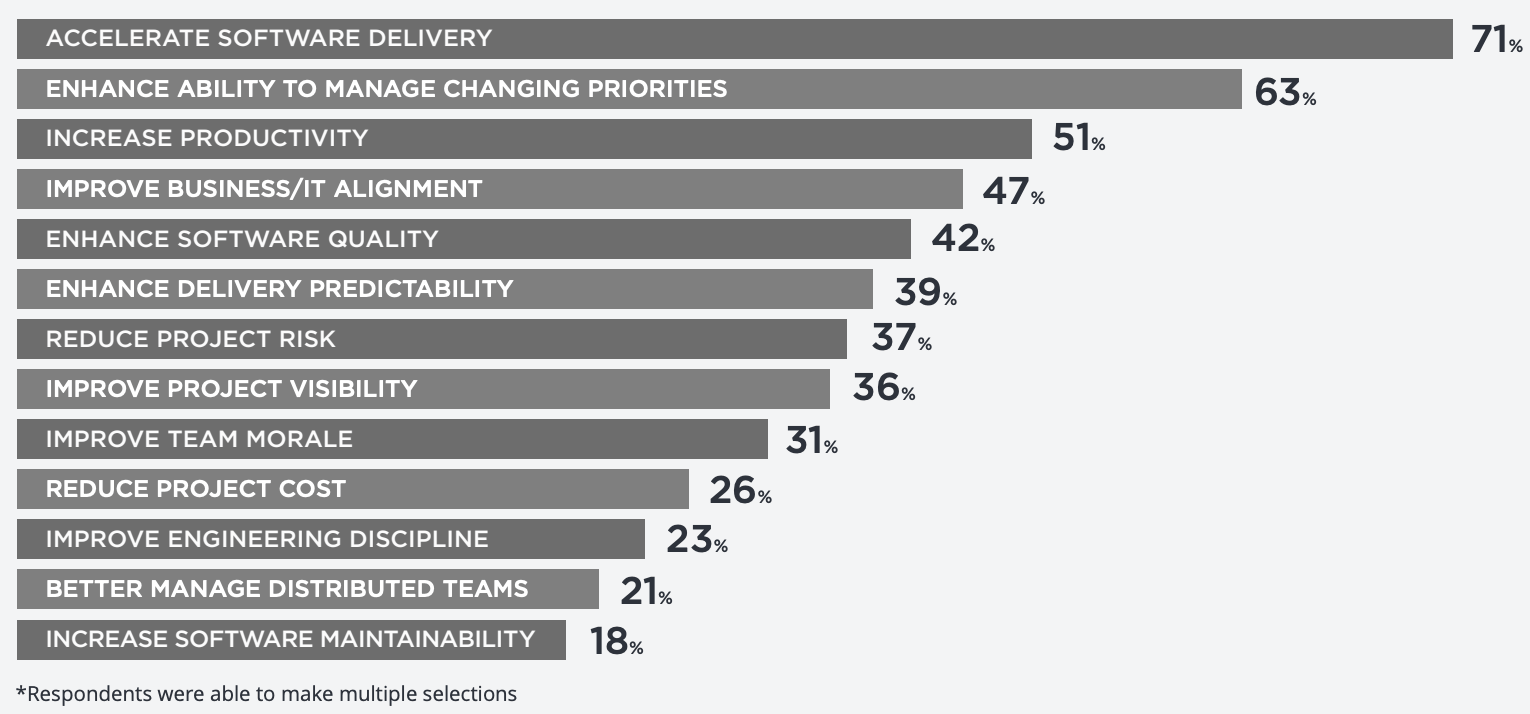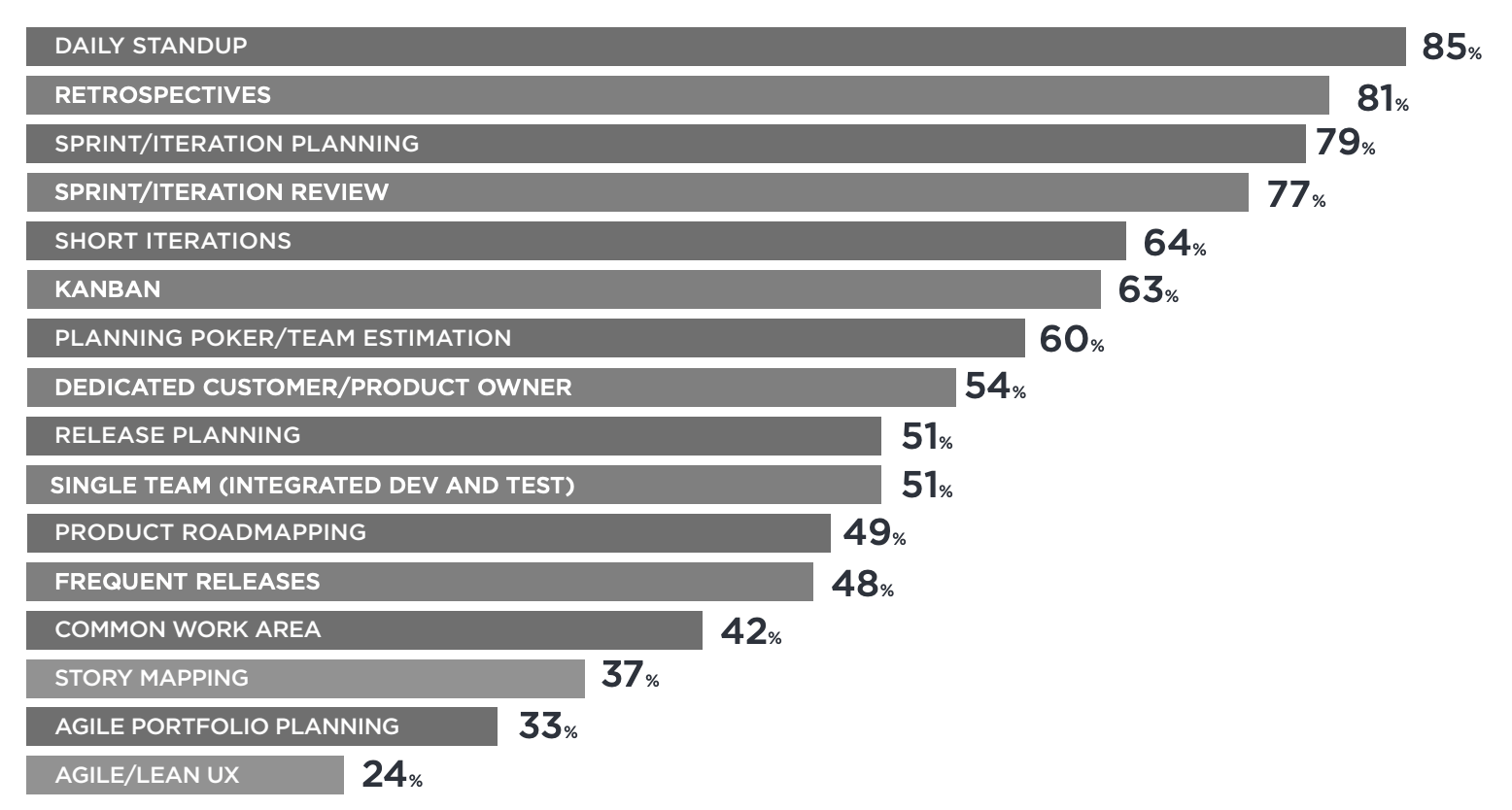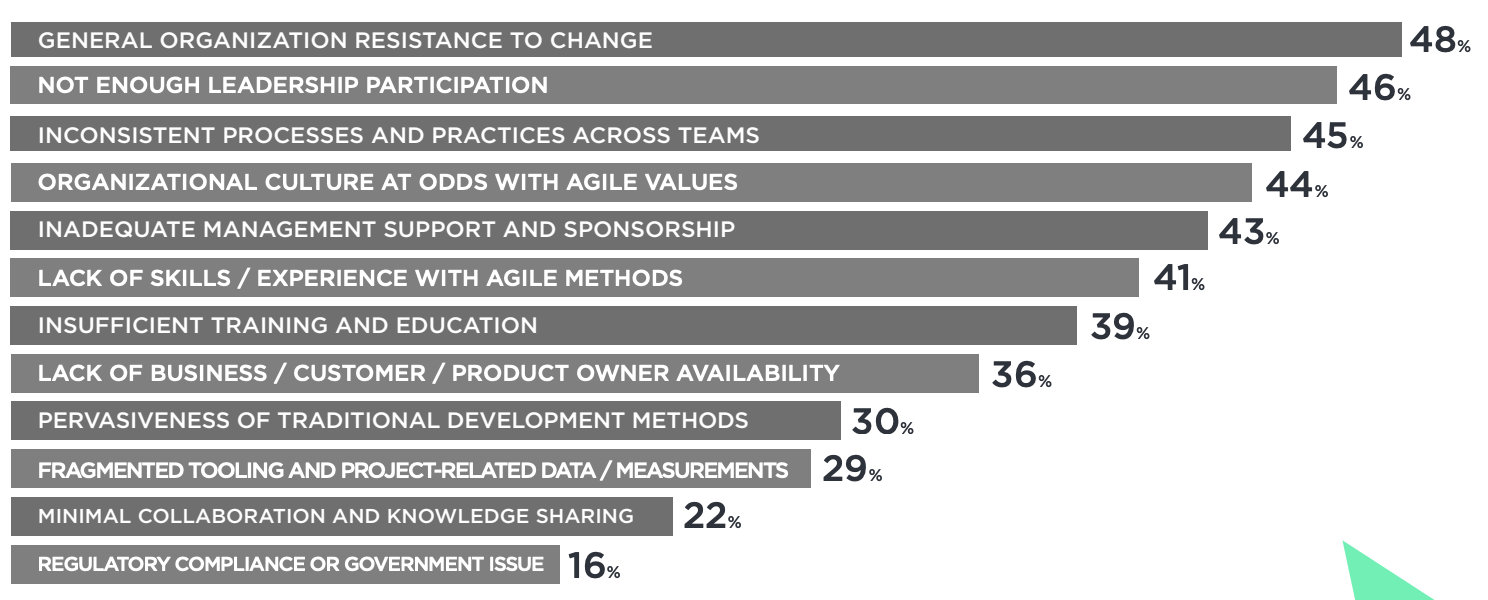May 26 Digital.ai (former CollabNet VersionOne) released the new 14th State of Agile. The survey involved 1,121 respondents, 59% of whom are located outside of North America.
Scrum masters and internal coaches predominate among the respondents.

Key trends
Culture still decides
The main challenges of Agile adaptation and scaling are related to the organizational culture.
Scrum and SAFE lead the way
75% of respondents use SCRUM or hybrids, and 35% use SAFE for scaling.
Agile increases transparency and readiness for change
As in the previous year, the ability to manage changing priorities and increase project transparency are among the key benefits of Agile adaptation.
What has changed a lot in a year
26% named the reduction in the cost of projects as the key reason for the adaptation of Agile. This is 15% less than a year earlier (it was 41%).
34% of respondents called the ability to see and assess risks before something rolls out in the prod, very important. This is 12% more than a year earlier.
28% of respondents called compliance very valuable, which is 18% more than a year earlier.
Reasons for adapting Agile
Although the leading causes have not changed, the focus this year has shifted from cutting costs (26% versus 41% a year earlier) risk reduction (37% vs. 28%).
Top 5 Reasons to Adapt Agile:
1. accelerate software delivery-71%,
2. improve the ability to manage priorities-63%,
3. increase productivity-51%,
4. increase business/IT consistency-47%,
5. improve software quality-42%.

Methodologies and techniques
Scrum and its hybrids are still the most common framework.

Top 5 agile techniques used:
1. stand-up-85%,
2. retrospectives-81%
3. iteration/sprint planning-79%,
4. sprint/iteration review-77%,
5. short iterations-67%.

Agile Scaling
The most popular framework for Agile scaling remains SAFe.

Obstacles to Agile adaptation
The main problems are related to the culture of the organization:
resistance to change — 48%,
lack of involvement of leaders-46%,
inconsistency of processes and practices among teams-45%.

Agile project management tools
"Respondents listed a myriad of tools for managing agile projects." Note that old Excel is in an honorable second place.

The full version of the report can be viewed here.




